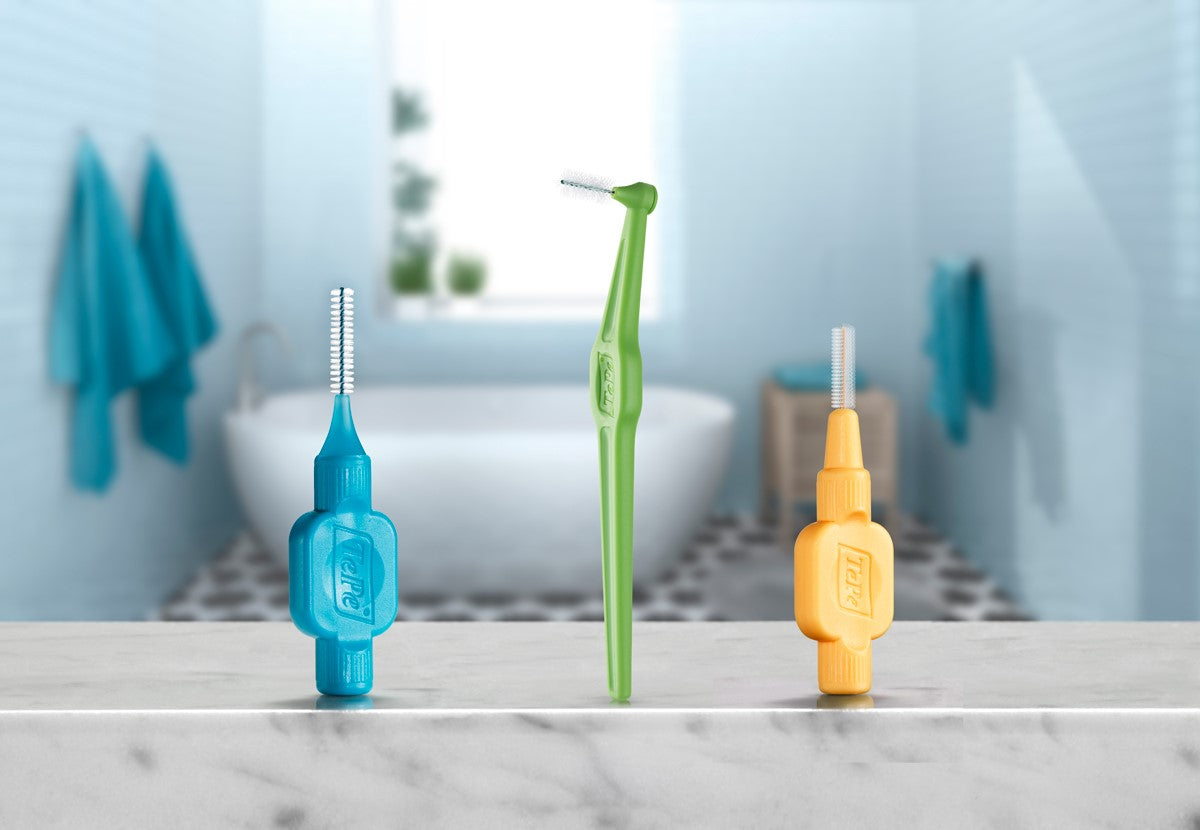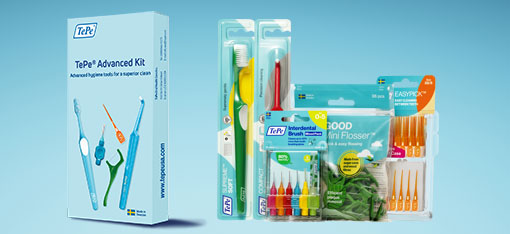TePe - A Sustainable Choice
TePe—A Sustainable Choice
World Environment Day is organized by the United Nations around a theme that focuses attention on a pressing environmental concern. This year on June 5th, we are encouraged to reimagine, recreate, and restore nature. The theme for 2021, “Reimagine. Recreate. Restore.”, invites us to grow trees, green our cities, rewild our gardens, change our diets and clean up rivers and coasts; making peace with nature. Join #GenerationRestoration!
Sustainability at TePe
Sustainability at TePe means ensuring environmental, economic, and social well-being for today and tomorrow. It means meeting the needs of people and society, without compromising the ability of future generations to also meet their needs. It is about living within the limits of the planet and protecting the environment. At TePe we take a holistic approach to sustainability, integrating it into every aspect of the business.

Carbon Neutrality in 2022
TePe is aiming for Carbon (CO2) neutrality for all products and packaging by 2022! Within production we are consistently reviewing our materials and methods of production. As you would expect from our Scandinavian heritage, we take our impact on the environment very seriously and only launch new products when they meet the stringent high-quality standards. We are well on our way and very proud of being a worldwide leader in this endeavor for oral care products.
What is Carbon Neutral?
When a product is produced it often has an environmental impact. TePe is focusing on how to minimize carbon dioxide, also known as the carbon footprint, by using renewable resources and energy. We must consider the entire life cycle of a product from the raw materials and how it is manufactured to how it is being disposed (see image below). During this Life Cycle Assessment (LCA) we can calculate the Global Warming Potential (GWP) to assess the amount of greenhouse gases that are released and absorbed. Greenhouse gases absorb energy and warm the Earth like an insulating blanket. During this entire process if you release as much as absorb, you are considered neutral. Thus, creating a more sustainable environment!

Understanding the concepts
- Sustainable: For materials such as plastic to be called sustainable, they must meet three requirements: be environmentally, economically, and socially sustainable.
- Renewable Resource: a resource which can be used repeatedly and replaced naturally. These resources can be recreated or regrown within a relatively short time interval.
- Renewable Energy: is energy collected from renewable resources, which are naturally replenished on a human timescale, such as sunlight, wind, rain, tides, waves, and geothermal heat.
- Recyclable: converts waste materials into new useful products.
- Degradable: breaks down over time but does not mean it is completely gone.
- Bio-degradable: degrades over time by way of microorganisms in a specific environment producing few elements like carbon dioxide and water.
- Compostable: biodegrades with the added benefit of producing nutrients.
Aligning with the United Nations Sustainable Development Goals (SDGs)
The 17 SDGs of the 2030 Agenda for Sustainable Development is a plan of action for people, planet and prosperity adopted by the UN General Assembly. Besides our special emphasis on materials, waste, and energy issues, we have chosen to focus on six goals that are particularly relevant to our business, where we can address the challenges and contribute the most to sustainable development.

SDG 3: Good health and well-being
As the scientific support for a connection between oral and general health grows stronger, TePe's vision of life-long oral health and our aim of creating positive change is more relevant than ever.
SDG 7: Affordable and clean energy
This goal is highly relevant to our business, as we put special emphasis on increasing energy efficiency. TePe uses 100 % renewable energy throughout production and wants to lead the way for other companies, for example by investing in solar energy.
SDG 8: Decent work and economic growth
Our sustainability work is a long-term commitment based on as well as stimulating financial growth. We strive to achieve higher levels of economic productivity through diversification, technological upgrading, and innovation. TePe’s Code of Conduct complies with the UN Global Compact principles, and suppliers are required to sign TePe’s Code of Conduct and must follow laws and regulations related to human rights and anticorruption.
SDG 9: Industry, innovation, and infrastructure
With the aim to shift to renewable raw materials in products and packaging, we have a close dialogue with suppliers and business partners about the progress of sustainable technologies and materials. We invest in automation technologies and continuously work to reduce our carbon footprint across the value chain.
SDG 12: Responsible consumption and production
We aim to reduce resource use, degradation, and pollution along the whole life cycle of our products, while aiming to increase people’s quality of life. Educating people on sustainable consumption and lifestyles is also part of our focus on long-lasting health and well-being.
SDG 13: Climate action
We see our responsibility in taking urgent action to combat climate change and its impacts by shifting to renewable energy and renewable raw materials and by striving to minimize the potentially adverse environmental effects of our products, services, and transports.
TePe’s aim with sustainability
At TePe we strive to meet the goals by prioritizing a focus on good people, good practice, and good products. Good people include a responsible and inclusive workplace. Under the theme of good practice, we address our approach to anti-corruption and transparency, the challenges we face regarding product end of life, and our efforts to educate our consumers about oral health and making conscious choices. Good product includes sustainable innovation and production, product and packaging materials, resource efficiency, and CO2 emissions.
As a company we aim to:
- Provide a life cycle assessment of all product and packaging materials to achieve zero carbon footprint.
- Shift to renewable/recycled materials in our products and packaging where possible
- Take a circular approach throughout operations and minimize waste
- Increase energy efficiency and keep using 100% renewable energy in our production
Rethinking plastics
TePe has been producing high-quality products for over 50 years, and we want to continue this with a focus on sustainability without compromising product safety, quality, or hygienic qualities.
Consider Safety
Currently, no material is better than plastic in terms of hygiene, safety, durability, moldability, cost-effectiveness, and automated processing. Using sustainable plastic allows TePe to produce the products in their Swedish manufacturing plant, where they have full control over the supply chain, use renewable energy and can ensure working conditions are fair and safe during the production of their product.
Consider Quality
Sustainable plastic allows TePe to continue to manufacture ergonomic products that can be bent and adjusted to the user’s needs. There are consistent material properties which is critical to comply with the ISO (International Organization for Standardization) standardized quality tests over time.
Consider Hygiene
Plastic has a high resistance to germination of bacteria, as compared to more porous material like bamboo. Why not use recycled plastic to create products? TePe believes in using plastic that is hygienic and food graded, ensuring no hazardous chemicals. Today, no food graded recycled plastic meets TePe’s requirements on low CO2 impact. TePe products are used in the mouth, and TePe wants to ensure that they are safe for consumers. All TePe products are BPA free.
Making the change to sustainable plastics

By replacing fossil raw material (coming from crude oil) with fossil-free pine oil in a mass balance system OR using biobased plastics (comes from a renewable resource), the carbon footprint of TePe is reduced. All TePe’s production takes place at the manufacturing plant in Malmö, Sweden, by use of 100% renewable energy. Part of it comes from the company’s own rooftop solar power facility. Again, these initiatives are reducing the carbon footprint during the life cycle of the product.

Currently, TePe is using sugarcane as the source for its biobased plastic, and the carbon footprint is nearly negligible, mainly since the sugar cane plant absorbs CO2 during the cultivation. This compensates for the emissions during the conversion of the materials and transport of both materials and finished product. The second type of plastic is a certified renewable material based on a mass balance approach using pine oil. By using mass balance, we lower the CO2 footprint of our interdental brushes by 80%.
TePe Sustainability Initiatives

The TePe GOOD TM toothbrush has a broad handle for an easy grip. Its thin neck and tapered brush head make it easy to access the teeth in the back of your mouth. Using the GOOD toothbrush is like using any other manual toothbrush – but it’s more climate smart.

The TePe GOOD TM tongue cleaner design corresponds to the natural shape of the tongue, which reduces the gag reflex and makes it easier to reach far back in the mouth. The three, slightly raised cleaning blades give a triple-effect, allowing bacteria to be removed with a few strokes.

The TePe GOOD TM Mini Flosser is a pre-loaded floss holder with a unique bite plan for easy flossing. The dental floss is both strong and slim, fitting into even the narrowest of spaces. The flosser is made from bio-based plastic and wood fibers.
Read More:











Leave a comment